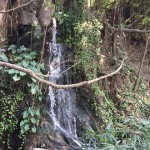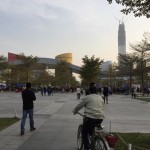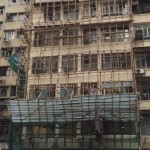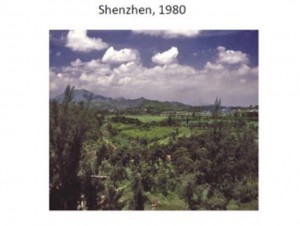You can be forgiven for never having heard of Shenzhen. Before Deng Xiaoping created this Special Economic Zone at the doorstep of Hong Kong in 1979, it was just a series of sleepy fishing villages known as Bao’an County with a population of 300,000. Now it has a population of 10 million. Below are a couple of photos shot from the same vantage point shown by Jeffrey Sachs in his excellent recent presentation at LSE about the challenges facing the world.
If you’re a sucker for this sort of thing here are some more before and after photos.
Made in China could almost be translated as Made in Shenzhen. The city’s economic output – US$260 billion in 2014 – exceeds that of Ireland. And it’s not just low-end textiles and consumer electronics anymore. The HQs or major production sites of Huawei and ZTE (ICT hardware), Tencent (online markets/social network), TCL (manufacturer for Samsung), Foxconn (manufacturer for Apple), BGI (gene sequencing) are all scattered around Shenzhen.
When I asked my colleagues for recommendations about where to visit they looked at me with baffled disbelief, as might a Londoner asked to recommend a itinerary in Thamesmead (“Isn’t that where all the BNP-types hang out.”) Many of them hadn’t been to the Mainland for a decade. Hong Kong’ people’s disdain towards the Mainland has the weirdest manifestations. There are running riots in the North of Hong Kong because poor mainland shoppers and wholesalers cross the border to pick up safe, non-counterfeit goods from HK, while Westerners like me skip over to do the opposite. On Chinese social media wags urge are urging Chinese shoppers to be noisier and trashier and awarding bonus points if they can reduce HK’s sensitive souls to tears.
Shenzhen is jammed right against the north of New Territory about 25 miles away from central Hong Kong. You get there on the MTR and walk across the border to catch the Shenzhen tube on the other side. And it is a proper ‘border’. You have to go to the bank and convert your Hong Kong dollars (pegged to the US dollar and issued by the private sector banks like HSBC) into Yuan notes from which Chairman Mao’s face beams at you. You buy a visa (price varies with nationality so avoid using US/UK passport if you have the choice), clear immigration and find your phone and bankcards either crash or charge foreign usage fees.
 The shot on the left, taken in Shenzhen’s OCT quarter, shows the absence of the city’s dark satanic mills. The sculpted waterfall sits in a boulevard with decent cycle facilities a ‘local’ market selling curios like impossible Rubix cubes with 25 cubes per face, retro radios and freaky T-shirts.
The shot on the left, taken in Shenzhen’s OCT quarter, shows the absence of the city’s dark satanic mills. The sculpted waterfall sits in a boulevard with decent cycle facilities a ‘local’ market selling curios like impossible Rubix cubes with 25 cubes per face, retro radios and freaky T-shirts.
Shenzhen’s not all like that, the sprawling Lianhuashan park was visibly poorer – it was crammed with young workers flying kites, courting, playing ball with their 1.1 kids and generally taking a break from their gruelling six day working week. Everyone speaks in different languages since they had flocked to the city from all corners of China. I seemed to be the only Cantonese speaker here (I wish). But so much of the city is either being built, or taking a pause from being built, while the property development company’s hyperventilating balance sheet takes a breather, that it lacked any sense of place. It doesn’t seem to have a proper centre. I wondered around for over an hour for someplace to have a coffee.
 The photo to the right was taken in Citizen Square in the middle of the afternoon. The huge open space had occasional clumps of people gathered around un-Chinese street entertainers. I watched a twenty-something wearing a ‘Punk Girl’ T-shirt, but looking anything but, play folk guitar. The biggest crowd (though modest by HK standards) was in a shopping mall housing the three-storey Book City. That sort of says it all. Hong Kong people had written Shenzhen off as somewhere poor where you go and have a massage, buy cheap furniture or knock-off electronics (they’re already selling iWatch lookalikes; though sporting an Android OS) while Shenzhen this city of swots is quietly reinventing itself as the high end manufacturing / services hub of China.
The photo to the right was taken in Citizen Square in the middle of the afternoon. The huge open space had occasional clumps of people gathered around un-Chinese street entertainers. I watched a twenty-something wearing a ‘Punk Girl’ T-shirt, but looking anything but, play folk guitar. The biggest crowd (though modest by HK standards) was in a shopping mall housing the three-storey Book City. That sort of says it all. Hong Kong people had written Shenzhen off as somewhere poor where you go and have a massage, buy cheap furniture or knock-off electronics (they’re already selling iWatch lookalikes; though sporting an Android OS) while Shenzhen this city of swots is quietly reinventing itself as the high end manufacturing / services hub of China.
My flat’s TV has just four terrestrial channels. Not much is broadcast in English and I am one of the five or so people that still watch ATV’s World channel. (A pollster tells me in typical pollster fashion that when offered the option 93% of his Hong interviewees prefer to respond to telephone questionnaires in Cantonese, and the remainder are split between between Mandarin and English.) Because of the collapse in TV viewing figures there are hardly any adverts, despite it being a so-called commercial TV channel. Perhaps, as a consequence, the distinction between advert and programme has all but vanished. My favourite programme is a travel show presented by two Chinese-Australian bimbos. They waltz around Southeast and South Asian countries. Each episode has them sampling food, experiencing some mildly extreme sport, checking out the wildlife before being exposed to some existentialist dilemma: “Should we try the ‘erbal all-over body rub or the Ayurvedic treatment.” The results are invariably – “totally awesome.” There is a fantastic world devoid of Pol Pot, Agent Orange, Tsunami and the Myanmar junta – an Asia I’m so looking forward to exploring.
 A couple of people have been concerned about my safety and darkly muttered about the triads and crime. They’ll be relieved to hear that there were just 27 homicides in Hong Kong last year – a number ‘Godfather’ Al Pacino could cheerfully despatch and dismember over lunch. (Two of last year’s murders in HK were by an English banker.) This compares favourably to UK’s 600 murders last year. More distressingly there were 1000 suicides last year in Hong Kong. So dear family, the greatest threat I face is probably myself, followed by other English people. Hong Kong feels an incredibly safe place to live….unless you’re a construction worker. Check out the 10 storey bamboo scaffolding to the left. And it’s all held together by plastic ties and duct tape. The cost of installing solar PV in Europe would plummet if we did the same thing. Now there’s a thought.
A couple of people have been concerned about my safety and darkly muttered about the triads and crime. They’ll be relieved to hear that there were just 27 homicides in Hong Kong last year – a number ‘Godfather’ Al Pacino could cheerfully despatch and dismember over lunch. (Two of last year’s murders in HK were by an English banker.) This compares favourably to UK’s 600 murders last year. More distressingly there were 1000 suicides last year in Hong Kong. So dear family, the greatest threat I face is probably myself, followed by other English people. Hong Kong feels an incredibly safe place to live….unless you’re a construction worker. Check out the 10 storey bamboo scaffolding to the left. And it’s all held together by plastic ties and duct tape. The cost of installing solar PV in Europe would plummet if we did the same thing. Now there’s a thought.


